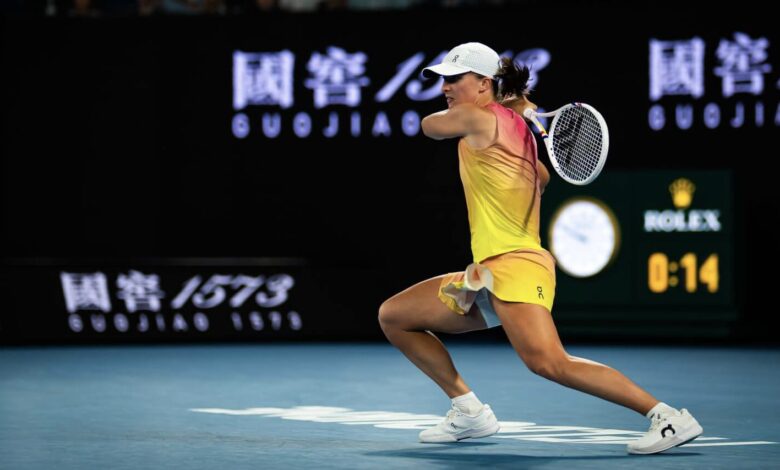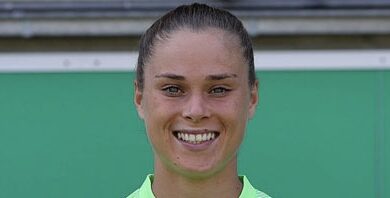Australian Open briefing: Iga Swiatek’s hard truths, Novak Djokovic’s endurance and a media circus

Father Time is undefeated, no matter how great a tennis player might be
Father Time comes for everyone. He usually brings an injury, or perhaps a series of them, for the players who want to try and spend their late 30s at the top of tennis.
He came for Roger Federer and took out his knee. He came for Rafael Nadal and basically wrecked some important machinery just below his chest to the middle of his thighs. His knees weren’t very good either. And now, in real time, we’re seeing him come for Novak Djokovic.
The French Open took out a knee, tearing his meniscus. He managed some other niggles through the fall so he could come to Australia fit and healthy. Then he suffered a leg muscle tear chasing a drop shot in his quarterfinal against Carlos Alcaraz. Adrenalin, painkillers and some inspired tactical changes got him over the line, but an attritional 80-minute set against Alexander Zverev was too much to handle.
In his news conference, Djokovic said that there are “a number of factors” to his getting injured more frequently, adding that “the statistics are against me”. The main factor is the number of years he has been doing this, to which all humans in their late 30s can relate. They simply can’t do the things they used to be able to do reliably. Injuries get more frequent, recovery takes longer than it once did, and there are hidden costs to coming back.
Djokovic has won this title by playing through muscle tears twice, one of them in his leg, but the acuteness of this injury was too much to handle, along with the accumulation of 20 years of elite-level tennis and 24 Grand Slam titles.
Was there something slightly different in Djokovic’s stride post-surgery that made him more prone to a hamstring tear? Did the injury from two years ago — a tear in the same muscle — ever fully heal, or was it always weak because of that original injury?
It’s impossible to know the answers to those questions. A 37-year-old Djokovic is subject to the same laws of physics and biology as everyone else. The gift of mortality is that it forces you to appreciate the life that has come before it. The same is true for amazingly great sporting careers. As they end, the clarity of the greatness becomes that much more precise.
How Iga Swiatek showed the world her hard-court qualities
Iga Swiatek is an elite hard-court player. As of yet, she’s just not been a consistently elite hard-court player at the Grand Slams.
Aside from her 2022 U.S. Open win, Swiatek’s successes on the surface have come away from the majors. Before this year’s Australian Open, she hadn’t reached a hard-court major semifinal since winning that title in New York.
In WTA 1000s and other tournaments, she has been as imperious as she is on clay. Since her first major title at the 2020 French Open, she was won 82 percent of her tour matches on the surface, winning 12 titles. In that time, Aryna Sabalenka’s win percentage is 75 percent, with 10 titles. She has heavily outperformed Swiatek at hard-court Grand Slams, but their overall records show that any characterization of their rivalry as clay-court specialist vs. hard-court specialist is wide of the mark.
Swiatek achieved her deepest Grand Slam hard-court run in 18 months by reaching the last four in Melbourne. She was one point away from reaching the final against an inspired Keys, who kept her level to beat Swiatek in a match tiebreak. Swiatek had been in imperious form until then, losing just 14 games in her five previous matches. She decisively proved that she can play close to or at her top level at a major on a hard court.
That should be her main takeaway from the tournament, rather than any lingering regret about losing such a tight semifinal. Swiatek looked more like the player who dominated the WTA Tour in 2022 and 2023, after a string of defeats in 2024 in which she became predictable and panicked when opponents — particularly hard-hitting ones like Keys — started playing well or even close to their peaks. Swiatek would force the issue, trying to blast high-quality shots back, rather than using her superb defensive skills and high-margin groundstrokes.



